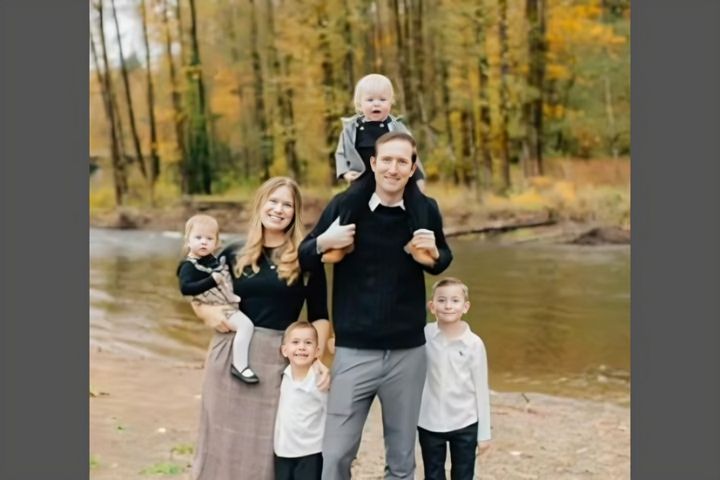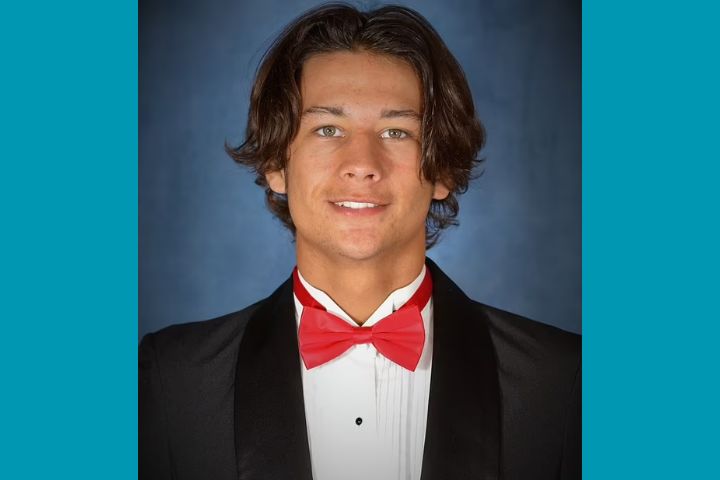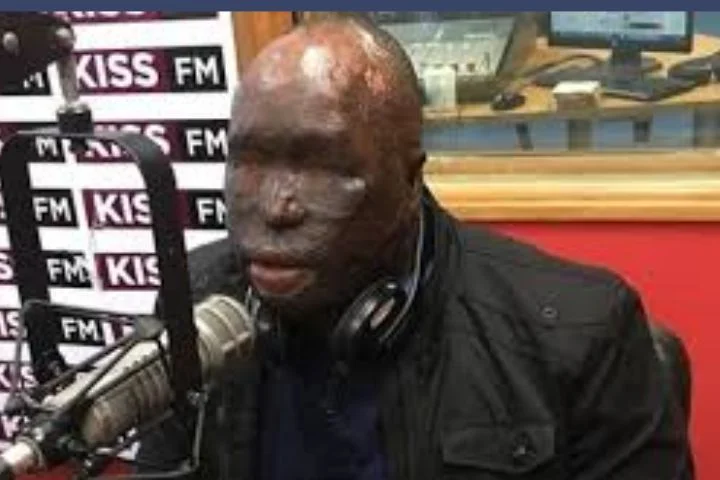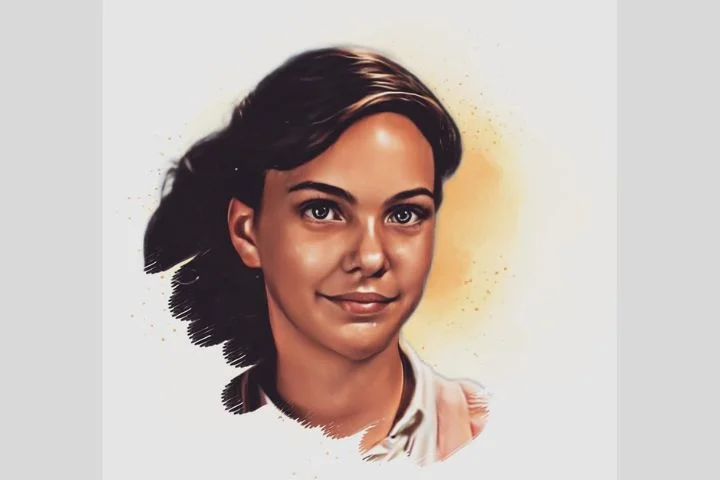When Claude Wise arrived at his San Bernardino, California home after work on the afternoon of Wednesday, March 30, 1977, he walked into a nightmare. He found the body of his wife, Beverly Wise, slumped over in the living room, dead from a single stab wound to the chest. Claude’s stepdaughter, 5-year-old Brandi Jondell Summers, and his daughter, 2-year-old Tiffani Wise, were both missing. His youngest daughter, 8-month-old Stacey, was sitting in the hallway, alone but unharmed.
In shock, Claude called the San Bernardino Police Department. Detectives immediately started interviewing the couple’s neighbors to see if they had heard anything unusual that day; several recalled seeing a white man wearing a leather jacket outside the Wise home. The man, who matched the description of Beverly’s ex-husband, Roy Summers, was seen placing Tiffani into a gold-colored Camaro around 11:20 am. None of the witnesses recalled seeing Brandi.
Investigators said that Roy, who was Brandi’s father, was wanted for questioning but refrained from calling him a suspect in the mu*rder-kidnapping. Their main concern at the moment was finding the missing children. They noted that Brandi, who suffered from cystic fibrosis, needed frequent doses of medication to help keep the disease under control and it was imperative that she be found quickly.
Claude, a sergeant in the Air Force, was in shock when he spoke with reporters the day after the mu*rder. “I’m trying to hold myself together the best I can, but it’s kind of hard after you’ve found your wife all covered with blood and the two little girls you love gone. I just hope they’re all right.” He was concerned about Brandi, noting that she had to take several pills with each meal and she didn’t have any with her. “If she doesn’t get [her medication], she’ll be needing to go to a hospital soon.”
Claude and Beverly had been high school sweethearts who went their separate ways after graduation. After Claude joined the Air Force and was sent to Thailand, Beverly met and married Roy. The marriage didn’t last, and by the time Claude returned to the United States, Beverly was divorced. The two rekindled their high school romance and eventually married. They had been weeks away from their fourth wedding anniversary when Beverly was k*illed.
Beverly had limited contact with Roy after their divorce; she had only seen him once since she got married to Claude. When she last spoke with him, he had been living in Arizona and working as a blacksmith. Detectives were desperate to find him but unsure where to look.
Claude and Beverly had moved into their San Bernardino home three years earlier. They chose the quiet, tree-lined neighborhood because they thought it would be a good place to raise children, and the family was well-liked by their neighbors. Beverly was described as a warm and friendly young woman who could light up any room she entered. She was a talented artist, a skilled card player, and an excellent cook. Everyone loved her, and they were horrified when they learned of her brutal m*urder.
Three days after Beverly was k*illed, there had been no progress in finding the missing children. Claude made regular public appeals for help finding his daughters, and soon announced that he was offering a $1,000 reward for information leading to their return and the arrest of Beverly’s mur*derer.
Detectives learned that Roy Summers was living in Livermore, California, more than six hours away from San Bernardino. They went to his home and interviewed him, but left convinced that he had nothing to do with Beverly’s mu*rder or the abduction of Brandi and Tiffani.
On April 4, 1977, the San Bernardino police formed a special task force to investigate the double kidnapping. More than a dozen investigators were assigned to the task force; they worked around the clock following up on each tip they received, hoping one would lead them to the missing children. Since there was a possibility the girls had been taken out of state, officials asked for the assistance of the FBI.
Sgt. John Klein told reporters that the task force was going back over the entire case file, re-interviewing witnesses and tracking down everyone associated with Beverly and Claude. “Right now, we’re looking into his background and her background…people he’s worked with, people she might have known, everything. We’ll come up with something to go on.”
Many of the detectives working on the case had children of their own, and it was hard not to take the case personally. Sgt. Klein admitted, “I’ve lost a lot of sleep in the last few days and the other guys are saying the same thing. We’re all very anxious to find the children and it’s very frustrating not to have a solid lead.”
As the investigation entered its second week, detectives grew increasingly worried about the safety of the children. Detective David Franz worried about the fact that Brandi didn’t have her cystic fibrosis medication with her. “She was in the habit of taking her own medication…she knew when to take it and that if she didn’t she would get very sick.” They sent out alerts to all doctors in the state, hoping that one of them would recall writing a prescription for the medication for a new patient, but were unable to find anyone who had seen Brandi since she went missing.
The fact that the children hadn’t been k*illed alongside their mother gave the detectives hope that they were still alive, but there had been no reported sightings of the girls since they were abducted. There also hadn’t been any ransom requests. Investigators were continuing to work around the clock to identify the person who had taken the girls, but they only had a vague description of the man and were running out of leads.
According to witnesses, the k*iller appeared to be in his early 30s with short, reddish-brown hair and a ruddy complexion. He stood around 5 feet 9 inches tall and weighed approximately 150 pounds. On the day of the murder, he was wearing dark-colored pants and a blue shirt with vertical stripes. He was driving a bronze or gold Camaro.
Investigators decided to have two of the witnesses hypnotized to see if they could provide a more detailed description of the killer. Based on the results, two sketches of potential suspects were developed; detectives said it was unclear if both witnesses had seen the same man as the sightings were made a couple of hours apart. One witness saw a man place Tiffani in a gold Camaro at 11:20 am, while the other saw a man with a gold car walk up to the Wise home around 2:00 pm and go inside. The witness didn’t know what time the man left.
Detectives interviewed more than 100 people and followed up on each tip they received, but they were unable to develop any solid leads and had no idea what had happened to Brandi and Tiffani. They had checked with dozens of clinics and pharmacies, hoping that the kidnapper had sought treatment for Brandi, but their search came up empty.
Two weeks after the m*urder, a psychic told Claude that she believed both girls were still alive and were living with a poor woman in Mexico. Bea Lydecker claimed that she had “spoken” with each girl and that Brandi was getting progressively sicker without her medication. “The room they’re in has a bare floor…looks almost like a dirt floor. And there are chickens outside the door. The ground is very hard, like clay.” Her best guess was that the location was somewhere in Tijuana.
Bea also offered her impression of the ki*ller, though she admitted that she didn’t know his name. “I don’t feel he meant to k*ill her. He only wanted to make the family suffer. And I feel he’ll have a good alibi.” She believed that after he kidnapped the two girls, he left them with a woman in Mexico who had no idea they had been abducted. “She is absolutely innocent of everything.”
Detectives said that they were not going to base their investigation on the impressions of a psychic, but Beverly’s husband and parents decided it was worth taking a trip to Tijuana to see if anyone there had seen the missing children. They spent a day there, passing out missing person flyers and making sure to let everyone know that there was a $1,000 reward being offered for the girls’ return.
On April 19, 1977, a group of Claude and Beverly’s neighbors held a rally to show their displeasure with the way the mu*rder-kidnap investigation was being handled. Ken Selby, one of the organizers of the event, stated, “We are not satisfied that the investigation has been a thorough one.” Residents wanted police to “delve deeper” into the case and keep people better informed about the state of the investigation.
Ken noted that he had confronted two strange men who were walking in the neighborhood several days following the murd*er. He noticed a gold Camaro parked nearby, and when he asked the men if they needed help, they told him they were new to the neighborhood and were looking for a white German Shepherd dog. Suspicious, Ken alerted police about the men and they were picked up and questioned. Although they didn’t live in the area and had no real reason to be in the neighborhood, police let them go after a brief interview.
Several other neighbors reported seeing the same two men lingering in the neighborhood; one saw them holding a dog leash and peering into his backyard. When the men realized they had been noticed, they took off running.
Residents were on edge and believed the men had something to do with the m*urder-kidnapping; they pointed out that the Wise family owned a white German Shepherd dog like the one the men claimed to be looking for. Everyone was on edge, with many women afraid to stay at home alone during the day. They wanted to know what police were doing to ensure that the neighborhood was safe.
Officials, including the mayor, voiced their support of the San Bernardino Police Department as well as the other agencies assisting in the investigation. They noted that investigators had spent nearly 2,000 hours working on the case; they had interviewed more than 140 people and traveled throughout the state of California and beyond while following up on leads.
Beverly’s parents and Claude both said they were happy with the work police were doing and believed that the family had been targeted by the k*iller; the crime appeared to be personal and they didn’t think that the person responsible would strike again. The day after the rally, many of the neighbors — Ken included — apologized to police and admitted that they had let their fear and anger get the best of them.
A month after the m*urder, there was still no sign of Brandi and Tiffani. Claude worried that it was too late to save Brandi; if she hadn’t had her medication for the past month, her doctor didn’t believe she could still be alive. Tips had started to dry up, and the investigation was in danger of going cold.
A year later, the crime was still unsolved. More than 200 people had been interviewed and several — including Claude — had been given polygraph examinations. Detectives were able to rule Claude out as a suspect fairly quickly, but they were unable to identify any real persons of interest. Claude feared it was someone he knew. “Usually I get along well with people…but it must have been something my wife or I did.”
Claude’s mother, who had known Beverly all of her life and was one of her closest friends, believed that Beverly had died trying to prevent her children from being taken. “She would fight anyone that got in the way of her children. She was extremely defensive of them. She was the ultimate in being a mother.”
Although investigators started to lose hope that Brandi and Tiffani would be found alive, over the next couple of years there were several reported sightings of the pair — along with Brandi’s father, Roy. While detectives had initially dismissed him as a suspect, in November 1979, he was arrested in Oregon. In his home, they found some of Brandi and Tiffani’s belongings, as well as photographs of both girls. Neither child was in the house at the time, however, and Roy refused to talk about them.
There were numerous reported sightings of the girls in Idaho in late 1979; while investigators believed that the sightings were legitimate, they were unable to locate either child. The sightings gave them hope that the girls, now 4 and 7 years old, were still alive, but it was unclear who had custody of them.
In January 1980, police arrested Boise resident Juanita Iwakiri and charged her with kidnapping after she admitted that the girls had been staying at her home; she later denied this and claimed she didn’t know the children. The charges related to Brandi were ultimately dropped, but Juanita went on trial in Tiffani’s case in May 1981. She was convicted of the charge and sentenced to five years in prison, but was let out on parole after serving less than five months. In 1984, the Idaho Supreme Court reversed her conviction.
In February 1980, California resident Lee Allan Casner was arrested in connection with Brandi and Tiffani’s abduction after investigators learned that both girls had been seen with him in December 1979. Lee was the brother of Juanita; he was charged with being an accessory to Beverly’s mu*rder and the abduction of her daughters. Vivian Casner, his sister-in-law, was charged as an accessory to the abduction. These charges were eventually dropped.
Roy was tried for Beverly’s mu*rder and the abduction of Brandi and Tiffani but was acquitted of all charges. He spent three years behind bars while waiting to go to trial, and after his acquittal he filed a multimillion-dollar lawsuit against the city of San Bernardino, alleging that the arrest and incarceration violated his civil rights. In June 1986, he agreed to accept a $400,000 settlement. He told reporters that police had concocted the charges against him because they had been unable to find the real killer and simply wanted to close the case.
Whether Roy was involved in the abduction of Brandi and Tiffani or not, his constant legal battles ensured that their names and pictures appeared often in local newspapers throughout the late 1970s and early 1980s. After Roy received his settlement from the city of San Bernardino, the investigation into the girls’ disappearance faded from the public eye and the case went cold. What happened to the two little girls remains a mystery; detectives still have no idea if they are alive or dead. They may have been killed shortly after their mother’s d*eath, or they may be living somewhere under assumed names. Sadly, no one appears to be looking for them anymore.
Brandi Jondell Summers was just 5 years old when she went missing from San Bernardino, California in March 1977. Brandi disappeared with her younger half-sister, Tiffani, on the day their mother was mur*dered. Detectives believe the girls were abducted by their mother’s ki*ller, but this person has never been identified. Brandi has blue eyes and blonde hair, and at the time of her disappearance, she was 4 feet tall and weighed 50 pounds. Brandi, who may go by her middle name, Jondell, suffers from cystic fibrosis and requires daily medication in order to stay healthy.
Tiffani Claudette Wise was just 2 years old when she went missing from San Bernardino, California in March 1977. Tiffani disappeared with her older half-sister, Brandi, on the day their mother was murde*red. Detectives believe the girls were abducted by their mother’s kil*ler, but this person has never been identified. Tiffani has blue eyes and reddish-blonde hair, and at the time of her disappearance, she was 3 feet 5 inches tall and weighed 40 pounds.
If you have any information about the murd*er of Beverly Wise or the abduction of her daughters, please contact the San Bernardino Police Department at 909–384–5142.






